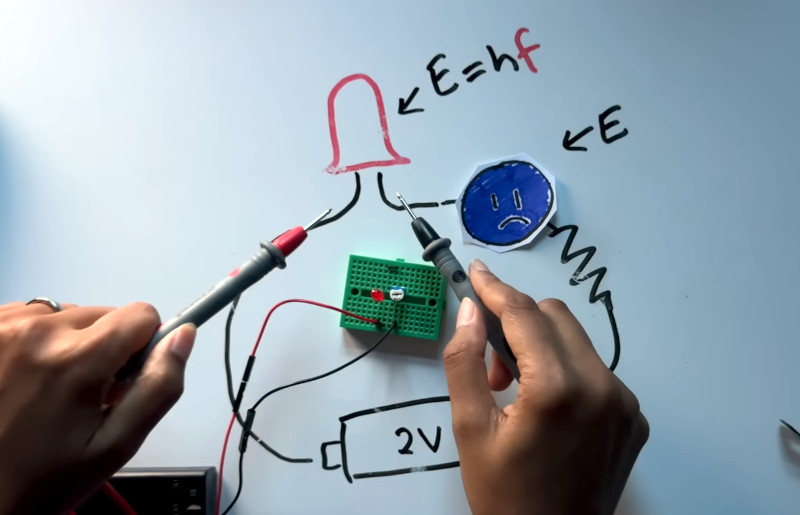We aren’t sure if [Looking Glass Universe] didn’t trust the accepted number for Planck’s constant, or just wanted the experience of measuring it herself. Either way, she took some LEDs and worked out the correct figure. Apparently, it hasn’t changed since we first measured it in 1916. But it’s always good to check.
If you need a refresher, Planck’s constant helps explain phenomena like why the color of light affects how the photoelectric effect manifests. It is at the root of quantum physics, making it a fundamental constant in our understanding of the universe.
LEDs are perfect for this experiment because they come in different colors. The basic method involves using a potentiometer to tune down the LED’s voltage until it just reaches the point where it is dark. Knowing the wavelength of the LED, you can estimate Planck’s constant from the wavelength and the voltage across the nearly ready-to-light LED.
You might use the potentiometer in a voltage divider configuration, but it should work either way. During the experiment, it was observed that even a disconnected LED emits a few stray photons. Nevertheless, it was still possible to interpret the results successfully.
Since Planck’s constant is very tiny, you’ll want to use a scientific calculator for the math or, as in her case, Wolfram Alpha. The first result was off by an astonishingly small amount of 1 × 10⁻⁴⁰. No, that’s not alarming at all — that number is amazingly small!
https://hackaday.com/2025/10/20/dont-believe-plancks-constant-measure-it-yourself/



